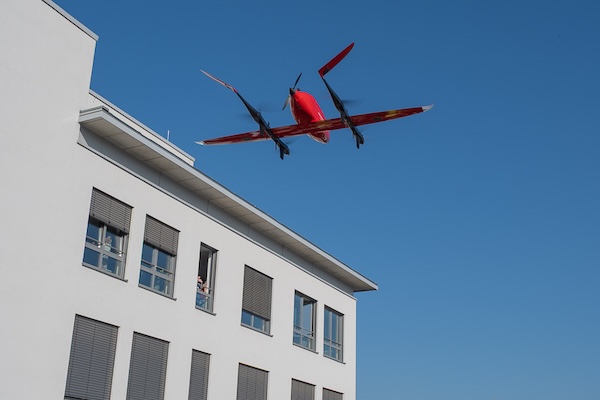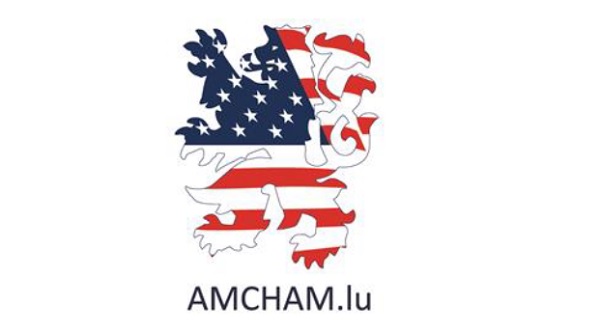 Credit: Ali Sahib, Chronicle.lu
Credit: Ali Sahib, Chronicle.lu
When I hear the word "drones" I'm instantly reminded of sweeping aerial shots that elevate the visual experience of any broadcast.
My professional journey was closely tied to television for over a decade, particularly to the coverage of major international sporting events that attract millions of viewers. One of the best ways to enhance the viewer experience is with bird's-eye imagery, and I first witnessed the use of a camera-equipped drone back in 2015 during a road cycling event at the European Youth Olympic Festival in Tbilisi, Georgia. Even then drone filming was becoming a staple in live TV production and soon drones would become part of daily life in ways few could have predicted.
For Ukrainians and others the perception of drones changed dramatically with the onset of the full-scale invasion in February 2022. What once served as tools for cinematic shots or technical inspection quickly became "eyes in the sky" for soldiers and eventually weapons capable of striking targets far beyond the battlefield. Reports of drone activity now make headlines almost daily and European countries are increasingly studying and adapting Ukraine's military drone innovations, some of which are now partially guided by artificial intelligence.
National Hub
In early May Luxembourg announced the opening of a new national hub for civil drone technology, the Luxembourg Drone Center in Esch-sur-Alzette. Operated by the national vocational training institute CNFPC, the centre provides certified theoretical and practical training programmes adapted to a variety of professional applications. These include infrastructure inspections, audiovisual production, precision agriculture and data handling. The initiative was launched in response to the growing number of drone operators in Luxembourg. According to the Ministry of Mobility and Public Works more than 4,000 drone operators were registered as of March 2025, marking an 85% increase over two years. This growth reflects rising demand for qualified personnel, particularly following the introduction of mandatory training under the European regulatory framework in 2021.
Training
The Luxembourg Drone Center aims to close the gap in practical training. It provides instruction for beginners, qualification courses for existing pilots and awareness modules covering data protection, cybersecurity and operational safety. The facility also supports companies interested in exploring the use of drone technology for the first time. According to representatives of the centre the objective is to provide a complete learning experience that matches real-world needs and regulatory expectations.
Medical
Last week a consortium of public and private institutions successfully completed Luxembourg's first medical drone delivery. A fully electric drone transported a blood sample from Hôpital Kirchberg to a laboratory in Junglinster. The journey took around ten minutes and was carried out entirely within a geofenced flight path, avoiding populated areas, motorways and restricted zones. The demonstration was described as a proof of concept for integrating drones into medical logistics. Organisers highlighted the potential for future use cases including the transport of tissue samples and medications. The drone used produces no direct CO₂ emissions and consumes only 0.7 kWh per 100 kilometres. It also reduces vibration levels compared to traditional road transport.
These developments show that in Luxembourg drones are evolving beyond visual media or military use. They are becoming practical tools for education, logistics and healthcare. Global trends confirm this trajectory. According to Grand View Research the global drone market is valued at $73 billion in 2024 and is expected to grow to $163.6 billion by 2030 with a compound annual growth rate of 14.3%. MarketsandMarkets reports that drones are most widely used in infrastructure inspection, logistics, precision agriculture, emergency response and medical transport. This growing range of use cases demonstrates the versatility of drones and their increasing relevance across industries.
Regulation
As drone use accelerates, governments face the challenge of keeping regulation in step with innovation. The European Union introduced a unified drone framework in 2021 establishing three categories of operation: open, specific and certified. These categories are designed to reflect the level of operational risk and determine how strictly each drone use case should be regulated. The "open" category covers low-risk operations such as flying small drones for leisure or simple commercial tasks, usually within the pilot's line of sight and away from people or restricted areas. The "specific" category involves higher-risk activities such as flying beyond visual line of sight or near populated zones and requires a risk assessment and operational authorisation from the relevant aviation authority. The "certified" category applies to the most complex or sensitive operations such as transporting people or hazardous goods by drone and is subject to the highest safety standards similar to those in manned aviation.
In Luxembourg, the Directorate of Civil Aviation (DAC) is responsible for enforcing these rules. The DAC oversees drone registration, pilot training requirements and the approval of more complex operations under the specific and certified categories. It also helps define geofenced zones where drones can or cannot operate in cooperation with other national and European aviation bodies.
Globally regulation remains uneven. In the United States the Federal Aviation Administration requires remote identification systems and has introduced waivers for beyond visual line-of-sight operations, especially for logistics and inspection use cases. In Japan government programmes encourage drone deployment in rural medicine and agriculture where human access is limited. Rwanda and Ghana have pioneered medical drone delivery at scale in partnership with companies like Zipline which has completed over a million deliveries in sub-Saharan Africa. These examples demonstrate that effective drone policy is not only about safety but also about fostering innovation that meets local needs.
Globally
Globally the drone industry is experiencing rapid growth. According to a report by Grand View Research the global drone market is valued at $73 billion in 2024 and is expected to reach $163.6 billion by 2030 representing a compound annual growth rate (CAGR) of 14.3%. Similarly Fortune Business Insights estimates the global drone services market, which includes applications in delivery, inspection and agriculture, at $24.1 billion in 2024 with projections reaching $213.9 billion by 2032 at a CAGR of 31.1%.
In the logistics and transport sector specifically Precedence Research reported that the drone market was worth $1.36 billion in 2024 and could grow to over $82 billion by 2034 with a CAGR of 50.7%. This includes applications such as last-mile delivery, supply chain transport and emergency logistics.
Agriculture
Agricultural drone use is also expanding rapidly. A 2024 industry report by DJI, one of the world's leading drone manufacturers, revealed that over 400,000 DJI agricultural drones are now in use globally covering more than 500 million hectares of farmland. According to the report drone-based farming solutions helped reduce water usage by 222 million tonnes and significantly cut emissions, a 90% increase in usage compared to 2020 levels.
Healthcare
In the healthcare sector autonomous delivery company Zipline has become a global reference point. According to data published by Contrary Research Zipline's drones have flown over 100 million miles, carried out 1.4 million deliveries and now supply 75% of Rwanda's national blood distribution. Their model is being replicated in Ghana and piloted in several regions of the United States and Europe for medical transport.
Conclusion
Yet challenges persist. Urban drone integration raises concerns around noise, surveillance, liability and shared airspace with helicopters and other aircraft. Insurance frameworks, incident reporting systems and no-fly zones are still under development in many countries. Additionally, the rise of AI-assisted autonomous drones introduces complex ethical and legal questions around accountability and decision-making. As drone capabilities continue to expand so too must public understanding, regulatory clarity and responsible governance. Without clear rules, transparency and engagement from all stakeholders the risk of accidents, misuse or mistrust could undermine the many benefits this technology has to offer.









